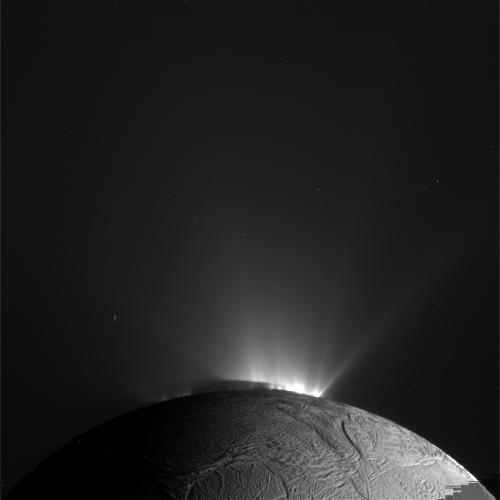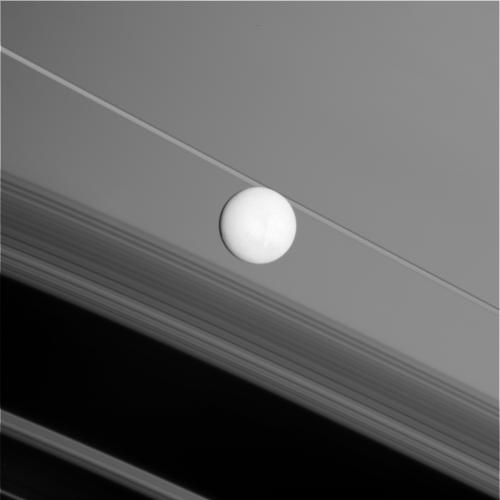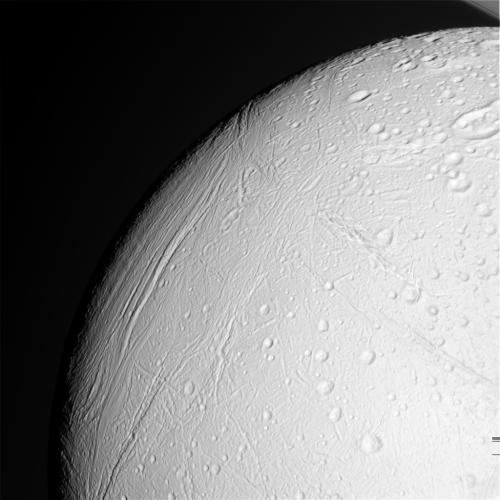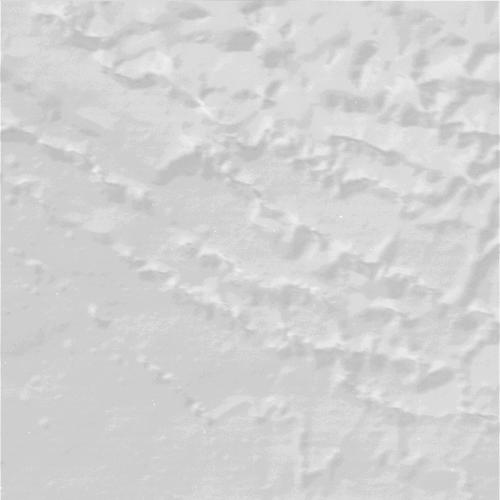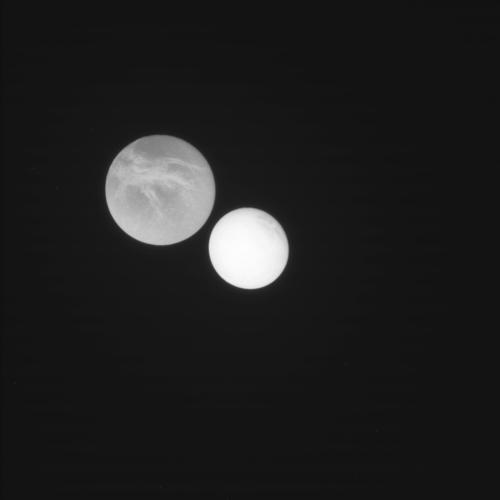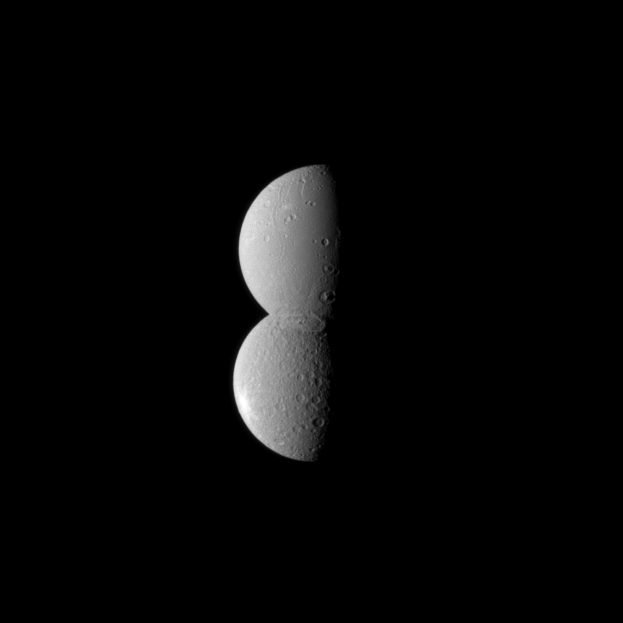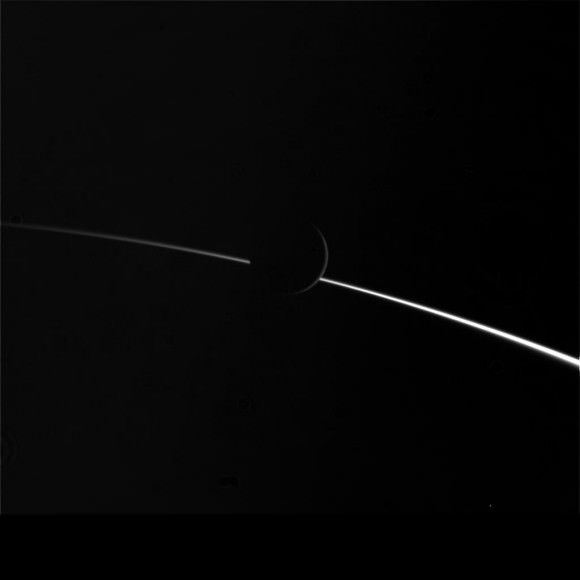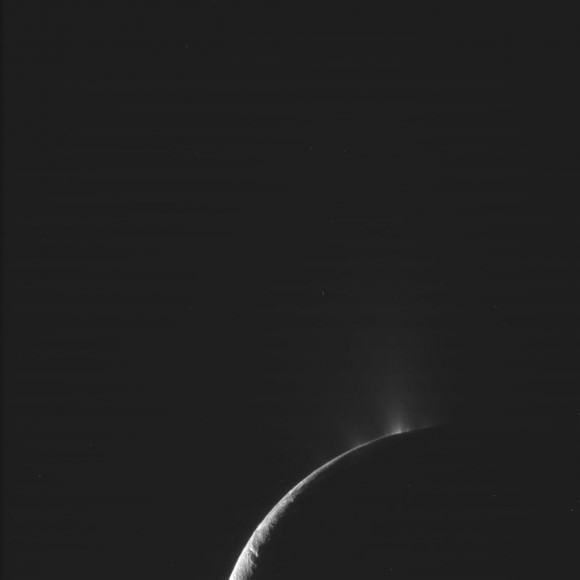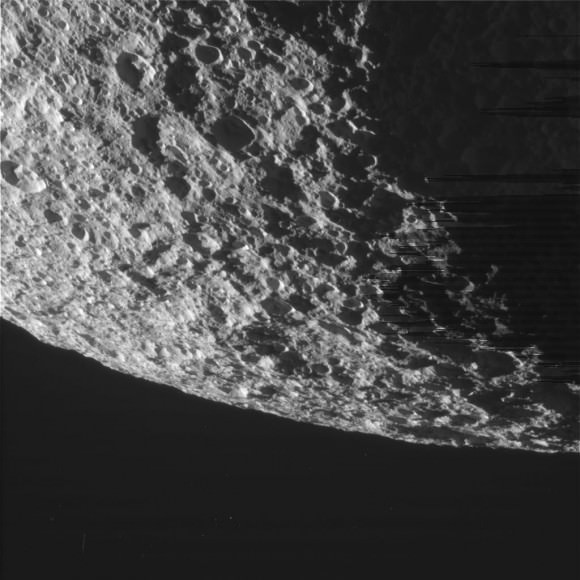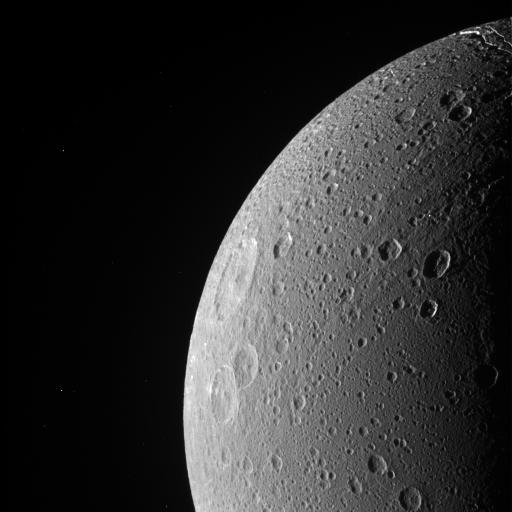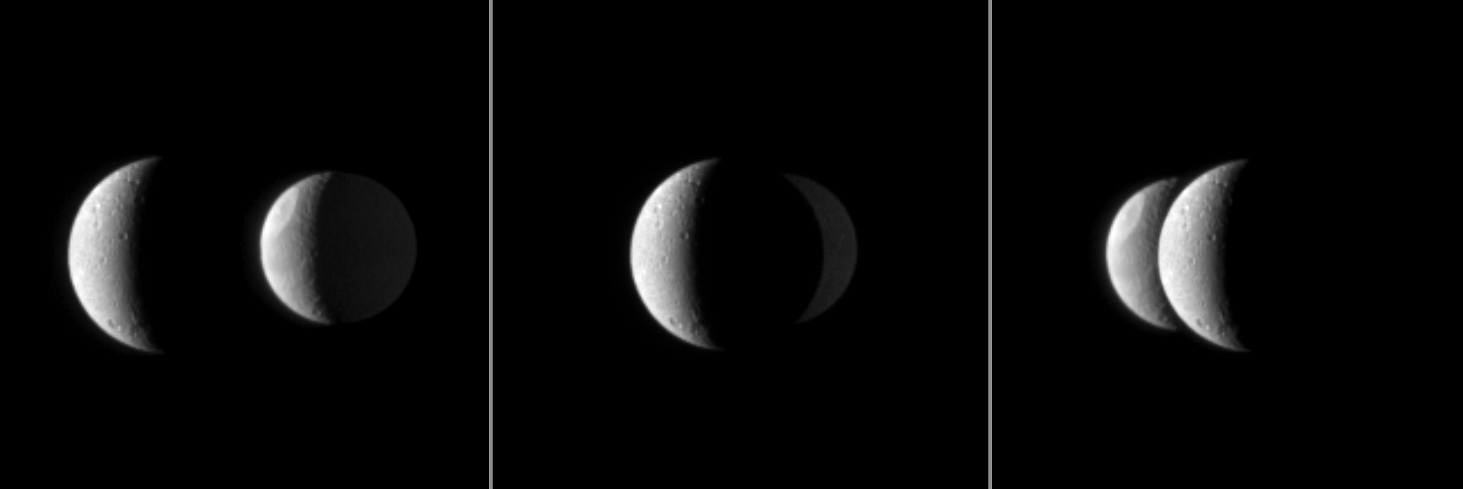The Cassini mission is just a non-stop faucet of fantastic images! Here are two that were released today, for your viewing pleasure. The first image, above, is an eclipse of Saturn’s moon Tethys, which lies in the background, by Dione. The three images were each taken one minute apart.
As you can see, from Cassini’s perspective Dione passes right in front of Tethys. Make no mistake in thinking that these two Saturnian companions are close together in this shot, however; Dione, the moon in the foreground, is 2.2 million kilometers (1.4 million miles) from the Cassini spacecraft, while Tethys is 2.6 million kilometers (1.6 million miles) away.
An interesting feature of the image is how Tethys appears brighter on the side of the moon opposite the Sun. This is because Saturn, which lies out of the image to the right, is reflecting light from the Sun back onto the moon. Dione is not being backlit by Saturn from the vantage point of Cassini, so its face that is opposite the Sun appears darker.
Visible on Tethys is the Odysseus Crater, which spans a whopping 400km (240 miles). Given that Tethys is only 1,062 kilometers, or 660 miles across, the crater appears very large in comparison to the moon. It also makes the moon very much resemble the Death Star from Star Wars, don’t you think? These images were taken using Cassini’s narrow-angle camera on Nov. 28, 2009.

This second image is a synthetic aperture radar image of the surface of Saturn’s moon Titan. In the lower right and upper center of the image, the two wrinkly features are actually small Titanian mountains. What exactly causes the grooves in these mountains has still to be determined.
On Earth, the shifting of tectonic plates can form such structures, as well as the processes of water flowing, freezing, and melting.
Since Titan has an atmosphere composed mostly of methane and ethane, and experiences rain much like here on Earth, it’s quite possible that these processes are the cause of such features.
Because the illumination of this image comes from the radar on Cassini, the peaks of these formations should be the brightest. As is visible, this isn’t the case. Notice how the left side of the upper mountain in the image, and right side of the lower-right mountain are brighter. The materials that make up the darker and lighter areas are the cause for this lighting effect.
The image represents a patch of Titan’s surface 250 km (155 miles) high and 285 km (180 miles) wide, and the resolution is about 350 meters (1,150 feet) per pixel, and it was taken on December 28th, 2009.
Source: Cassini Equinox Mission, here and here.
